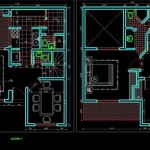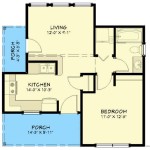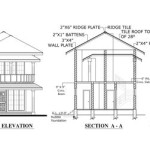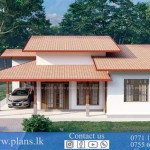House Interior Plan: A Comprehensive Guide to Design and Implementation
The house interior plan forms the backbone of any successful residential design project. It encompasses various elements, ranging from spatial arrangement and material selection to lighting design and furniture placement. A well-defined interior plan not only enhances the aesthetic appeal of a home but also optimizes its functionality and livability. Neglecting this crucial stage can lead to design inconsistencies, spatial inefficiencies, and ultimately, a less desirable living environment.
Effective house interior planning requires a systematic approach, beginning with a clear understanding of the client’s needs, preferences, and lifestyle. Subsequently, the design process involves conceptualization, space planning, material selection, and detailed documentation. Each phase is interdependent and contributes to the overall success of the project. This article will explore the critical aspects of house interior planning, addressing key considerations and providing practical guidance for achieving optimal results.
Defining the Scope and Objectives
The initial stage of any interior design project involves a thorough assessment of the client's requirements and aspirations. This encompasses understanding their preferred style, functional needs, budget constraints, and long-term goals for the space. Careful consideration should be given to the existing architectural features of the house, as these often dictate the possibilities and limitations of the interior design. Conducting a detailed site survey is essential to accurately document the dimensions of the rooms, the location of windows and doors, and the existing infrastructure, such as electrical outlets and plumbing fixtures.
A key element of this initial stage is the development of a comprehensive design brief. This document outlines the project’s objectives, scope of work, timeline, and budget. It serves as a guiding document for the entire design team, ensuring that everyone is aligned on the project's goals. The design brief should also include a detailed analysis of the client's lifestyle, including their daily routines, hobbies, and social habits. This information will inform the design decisions, ensuring that the final interior reflects the client's individual needs and preferences.
Furthermore, it is crucial to consider the impact of the interior design on the overall value of the property. Improvements to the interior design can significantly increase the resale value of a home, making it a worthwhile investment. However, it is important to strike a balance between creating a personalized space and ensuring that the design is appealing to potential buyers. A knowledgeable interior designer can provide guidance on how to achieve this balance, selecting materials and finishes that are both stylish and timeless.
Finally, accessibility considerations should be incorporated into the design from the outset. Universal design principles aim to create spaces that are usable by people of all ages and abilities. This includes features such as wider doorways, grab bars in bathrooms, and adjustable-height countertops. Incorporating these features not only makes the home more accessible to occupants with disabilities but also enhances its overall usability and appeal.
Space Planning and Layout Design
Space planning is the art of arranging furniture and architectural elements within a space to optimize its functionality and flow. It involves considering the size and shape of the rooms, the placement of windows and doors, and the intended use of each area. A well-planned layout can maximize usable square footage, create a sense of spaciousness, and improve the overall comfort of the home. Conversely, a poorly planned layout can result in cramped, awkward spaces that are difficult to navigate and uncomfortable to inhabit.
One of the first steps in space planning is to create a floor plan that accurately depicts the existing conditions of the house. This can be done manually using drafting tools or digitally using computer-aided design (CAD) software. Once the floor plan is created, the designer can begin experimenting with different furniture arrangements and layouts. This process often involves creating multiple iterations of the floor plan, each with a different configuration. The goal is to identify the layout that best meets the client's needs and optimizes the use of space.
Traffic flow is a critical consideration in space planning. The layout should allow for easy movement between different areas of the house, avoiding bottlenecks and obstacles. Pathways should be wide enough to accommodate people carrying objects or using mobility devices. Furniture should be arranged in such a way that it does not impede traffic flow. In open-concept living spaces, it is important to define separate zones for different activities, such as cooking, dining, and lounging. This can be achieved through the use of furniture placement, area rugs, and changes in flooring materials.
Another important aspect of space planning is the consideration of natural light. Furniture should be positioned to take advantage of natural light sources, such as windows and skylights. Dark corners can be brightened with artificial lighting, but natural light is always preferable. Mirrors can be used to reflect light and create the illusion of more space. The placement of furniture should also consider the view from the windows. Placing seating near windows can create a relaxing and inviting atmosphere.
Scale and proportion are also important factors to consider in space planning. Furniture should be appropriately sized for the room. Overly large furniture can make a small room feel cramped, while overly small furniture can get lost in a large room. The height of the ceiling should also be taken into account when selecting furniture. Tall ceilings can accommodate taller furniture, while low ceilings may require lower-profile pieces. The proportions of the room can be altered through the use of architectural details, such as moldings and trim.
Material Selection and Finishes
The selection of materials and finishes plays a significant role in the overall aesthetic and functional qualities of the interior design. Materials should be durable, aesthetically pleasing, and appropriate for the intended use of the space. Finishes, such as paint, wallpaper, and flooring, should complement the materials and contribute to the overall design scheme. The choice of materials and finishes should also consider the budget, maintenance requirements, and environmental impact of the project.
When selecting materials, it is important to consider their durability and resistance to wear and tear. High-traffic areas, such as hallways and kitchens, require more durable materials than less frequently used spaces, such as bedrooms. The choice of flooring materials should be based on the level of traffic, the presence of moisture, and the desired aesthetic. Hardwood flooring is a popular choice for living areas, while tile is often used in bathrooms and kitchens due to its water resistance. Carpet is a comfortable and warm option for bedrooms, but it requires regular cleaning and maintenance.
The color palette is another critical consideration in material selection. Colors can have a significant impact on the mood and atmosphere of a room. Light colors can make a room feel larger and brighter, while dark colors can create a cozy and intimate atmosphere. The choice of colors should be based on the client's personal preferences, the desired mood, and the existing architectural features of the house. It is important to create a cohesive color scheme that flows throughout the house, using a combination of neutral and accent colors.
Lighting is an integral part of the interior design and should be considered in conjunction with material selection. The type of lighting used can significantly impact the appearance of materials and finishes. Natural light should be maximized whenever possible, but artificial lighting is necessary to supplement natural light and provide illumination in areas that are not easily reached by natural light. The type of lighting used should be appropriate for the intended use of the space. Task lighting is ideal for areas such as kitchens and studies, while ambient lighting is suitable for creating a relaxing atmosphere in living rooms and bedrooms.
Sustainability is an increasingly important consideration in material selection. Opting for sustainable materials, such as recycled wood, bamboo, and low-VOC paints, can reduce the environmental impact of the project. Sustainable materials are often more durable and long-lasting, reducing the need for frequent replacements. The use of sustainable materials can also contribute to a healthier indoor environment, reducing exposure to harmful chemicals and pollutants. A focus on sustainability can enhance the overall value and appeal of the home.
Finally, the budget should be a primary consideration in material selection. It is important to establish a realistic budget for the project and to prioritize materials that are both affordable and durable. There are many cost-effective alternatives to expensive materials that can achieve a similar aesthetic. A skilled interior designer can help you navigate the vast array of material options and identify the best choices for your budget and design goals.

3d Floor Plans

Pin On Small Houses

House Floor Plans Your Best Guide To Home Layout Ideas

Need Adu Design For Your Place If Yes We Are The Right Spot You Sksi A Leading Architectural Interior Layout House 3d Home

Modern 3d House Plan Designs 2024 Interior Decor

Living Room Interior House Map Design Service In Pan

How To Read Floor Plans 8 Key Elements A Plan Foyr

Learn How To Design Two Story Homes With Planner 5d

House Floor Plans Your Best Guide To Home Layout Ideas

Pictures Housing Design Fascinating Home And Plans Modern House Small
Related Posts








